It was 2 years a go that we visited Damascus for a guided tour across Syria (read: The Old City of Damascus). But as we arrived in 2 days ahead of the tour, we managed to see Damascus with our own perception, and this was the best bit, we were picked up by a friend of a friend, who is a local. He owned the only musical shop in the Souq al-Hamadiyya – yes, they were having tea in front of his music shop.
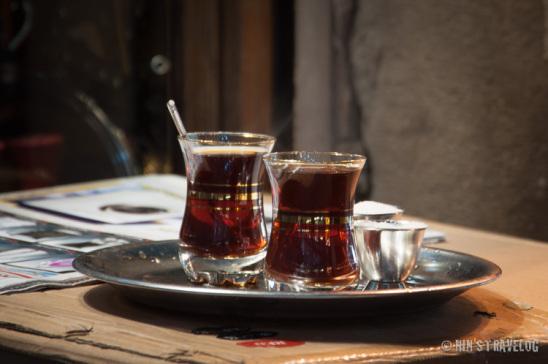
Tea for two at Al Hamadiyyah Souq
What I liked about the Old City were the alleyways, different on every corner; with it’s own specialty at every turn of the street. Souq al-Hamadiyya for instance, is a broad street and very popular with the locals; it sells anything and everything really, from cheap Chinese products, to local handicraft for interior decor. This is also serves as the popular gate towards the old city, at the end of the Souq, before the great Umayyad Mosque – I will explain more about this mosque next week – stands Temple of Jupiter.
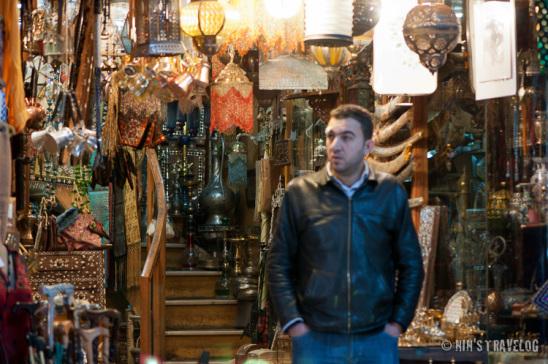
One of the many shops that sells all sorts of antiques, I wonder if they are still open for business
Temple of Jupiter is special because it was built by the Romans, at the beginning of the rule of Augustus (Roman Emperor) and completed during the rule of Constatius. It was during this time that Damascus was famous as the city of Jupiter.

The remains of Temple of Jupiter. will this survive during the war?
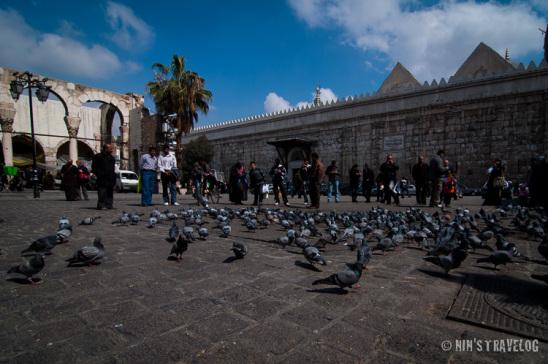
Part of the temple and Umayyad Mosque wall
What we see in the picture is only part of it, some other parts can be seen as part of the Umayyad Mosque. Like the Old City which has been through different periods of human history, so was this Temple and Mosque. The question is whether it will survive the latest turmoil?
As we moved on from this area, there was this very popular cafe shop, where the locals and the tourists mingle. It didn’t serve food, only coffee or tea, if we wanted food, than we needed to order some where else. Regardless of this, the Damascene think this is the ‘in place’, where you could see people and be seen. Again, I wonder whether this place is still popular now, or even still exists?
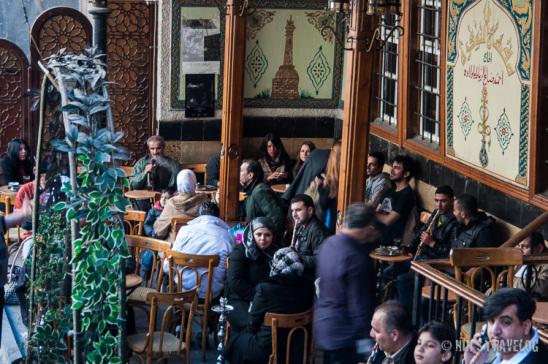
Very popular coffee shop – An Nafura, where people sit drinking coffee or tea or even smoking shisha, while talking to friends or just seeing and be seen by passers by
Further on from this place, things get more interesting, as to me, this is where the real atmosphere started. The streets widen and narrow with an infinite variation, from a chaotic communal road to an order of small palace.
The Old City is divided into four distinct quarters that roughly align with the fame of the seven gates around the Old City. Souq Al-Hamadiyya is the vibrant and commercial district of the Old City. Bab Sharqi was the gate towards the Christian Quarter , where we found the House of Ananias, the Roman Arch and St. Paul’s Chapel. Bab Salam is the entrance gate if you want to go to Shia’s Mosque of Sayyida Ruqqaya, the most impressively ornate mosque I’ve ever seen. Bab Musala is a gate for the Jewish Quarter, and home to the cities artisan community.
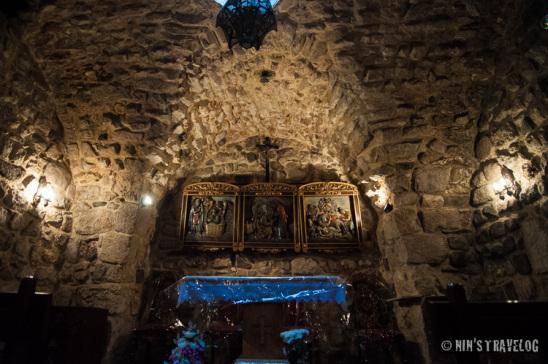
The chapel at the House of St. Anania, at the Northeastern corner of the Christian Quarter
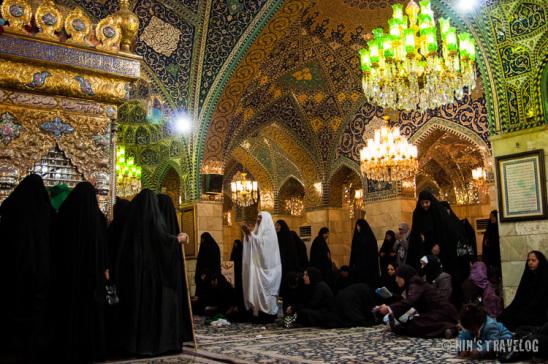
Sayyida Ruqayya Mosque, the very ornate mosque mainly for the Shiite
Inside these quarters dotted around are historic places, schools, Hamam, interesting places and palaces turned into museums, like Khan As’ad Pasha, turned into a private museum.
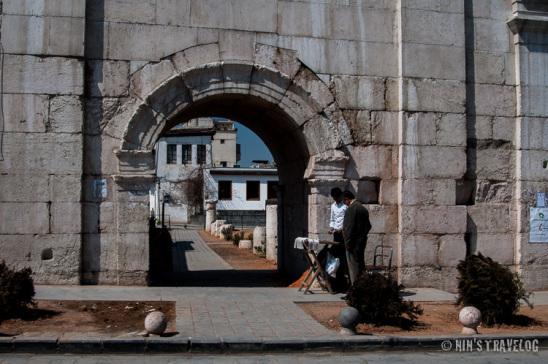
Bab ass Sharqi – One of the better looking of the gates towards The Old City
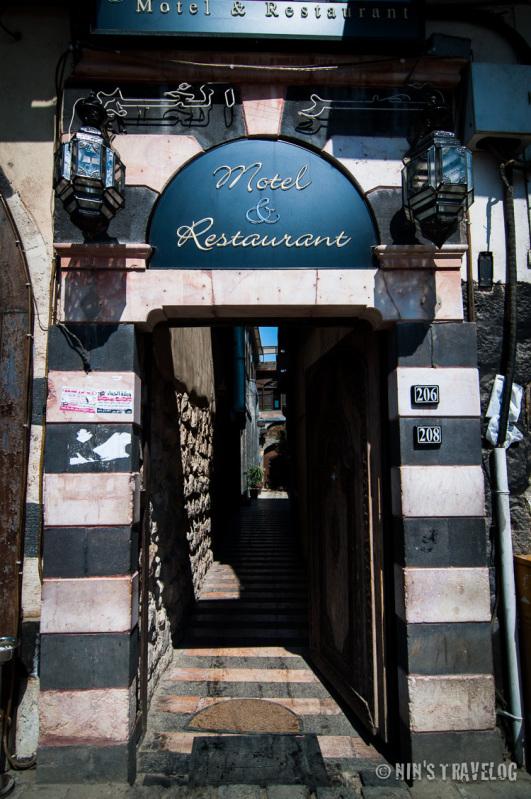
Entrance to one of many hotels inside the Old City
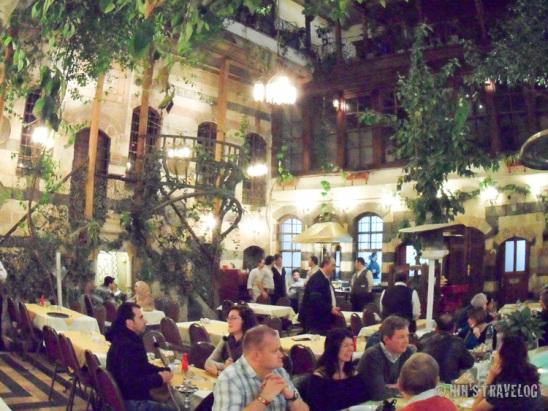
The atmosphere of one of the restaurants inside the Old City, where we ate at the inner court of the restaurant
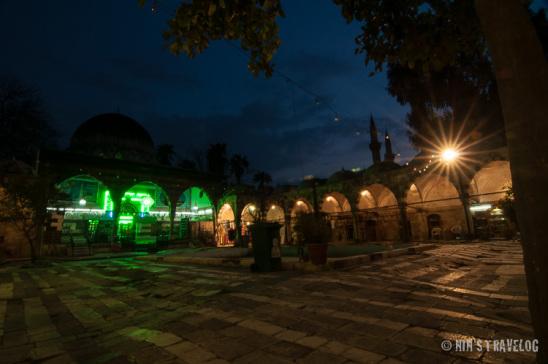
Not far outside from the Old City of Damascus, part of Takiyya as Suleimaniyya, built for the first time in 1554, by the Ottomans as a mosque and madrasah, was in bad condition, yet still a wonderful architecture
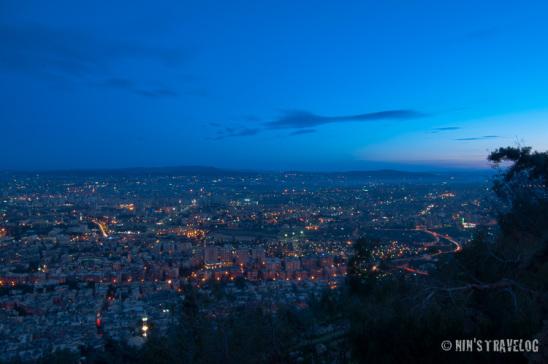
Photographs from the Jebel Qassioun, a popular viewing point (then) to look down to the greater Damascus
That was a really exciting experience that I wish a could return and visit all those places that I missed last time….
If you are interested in my other posts about Syria, check out: I’ve been to SYRIA
